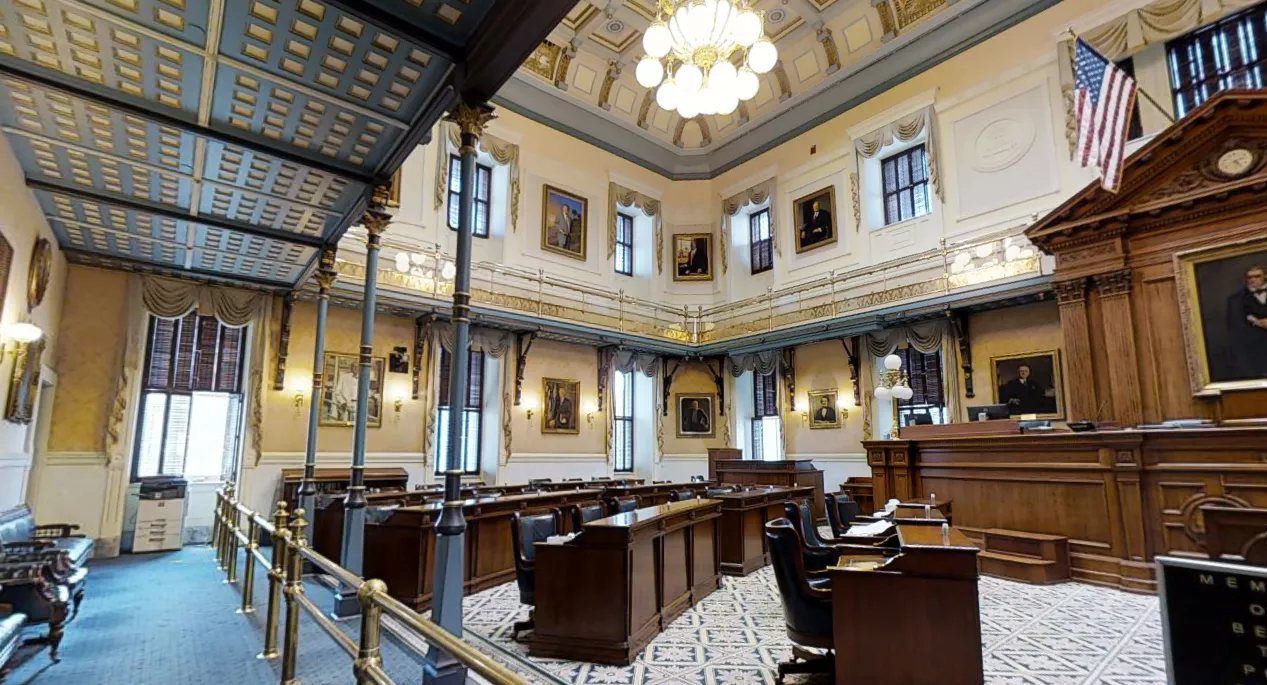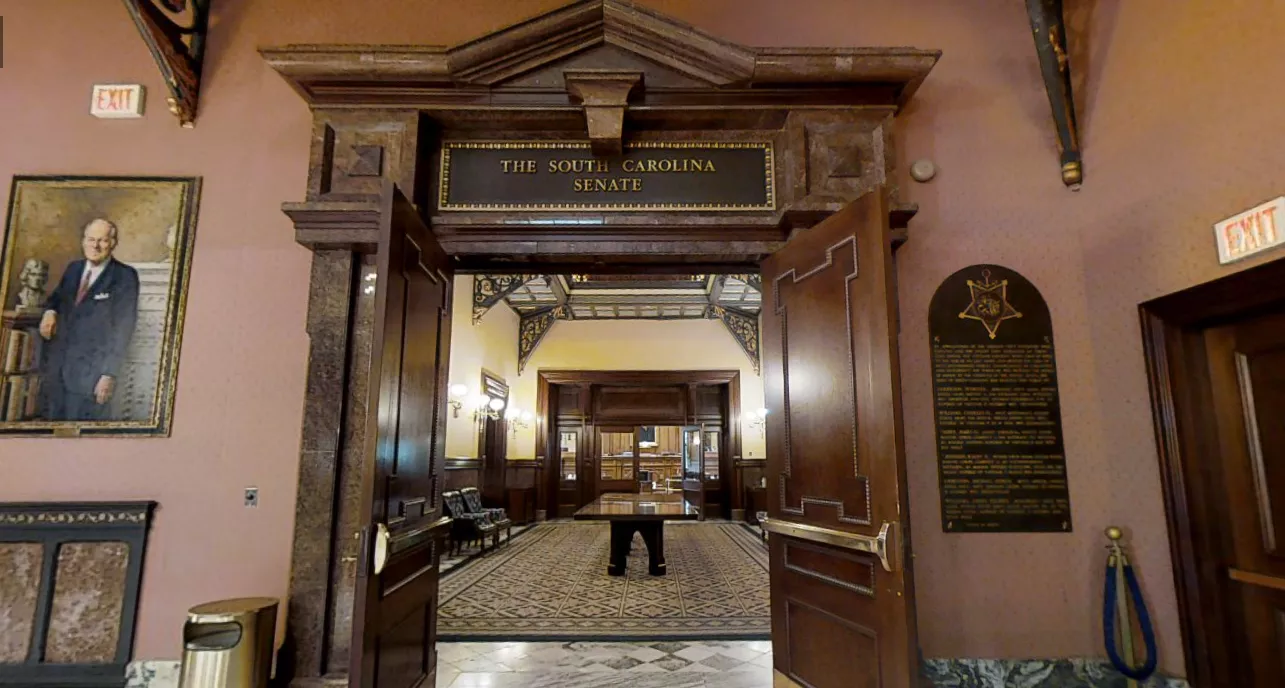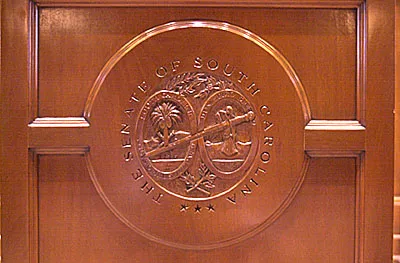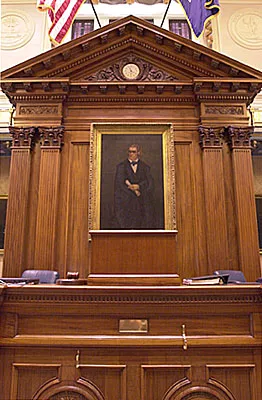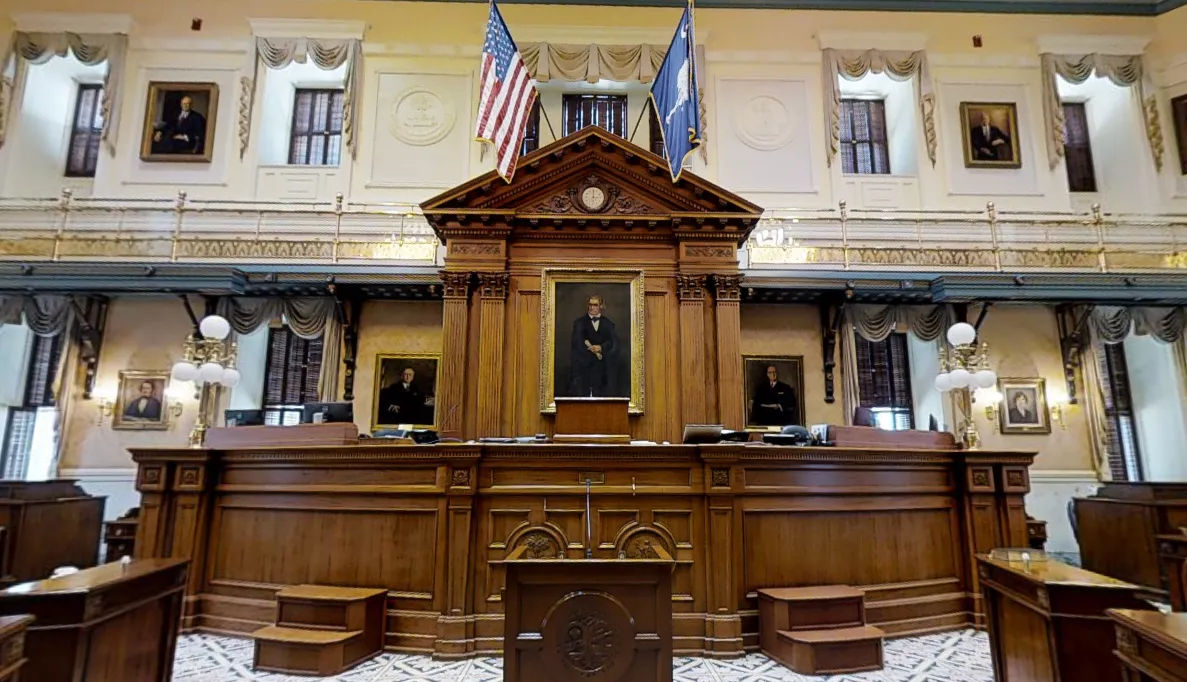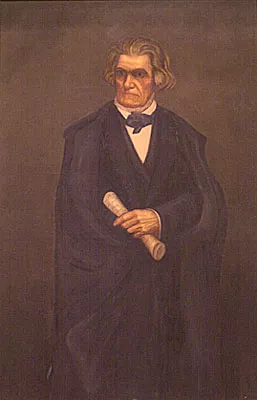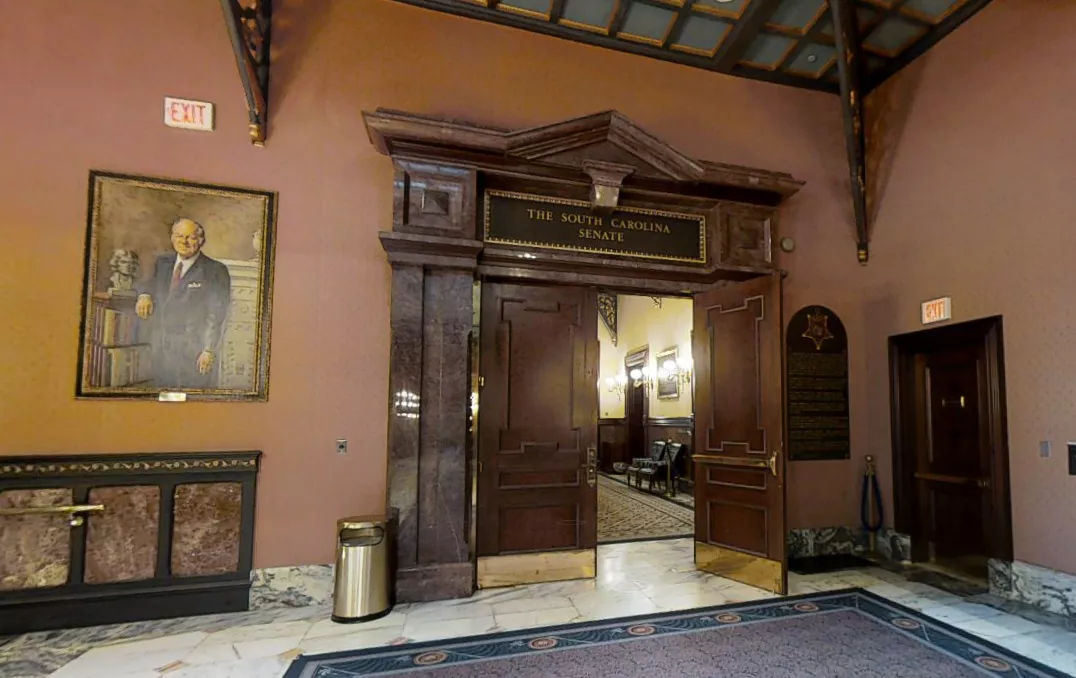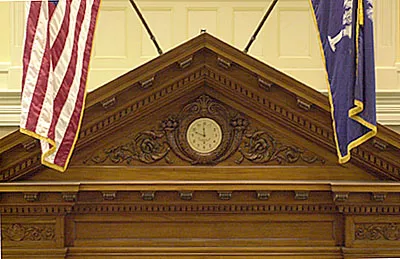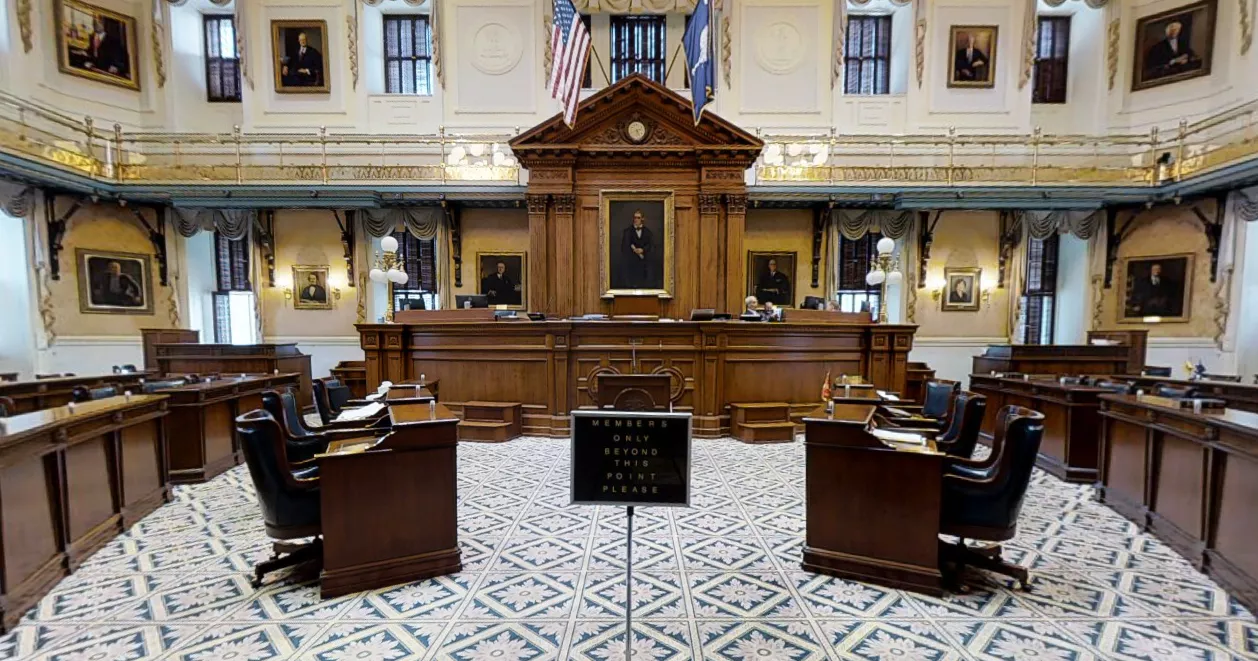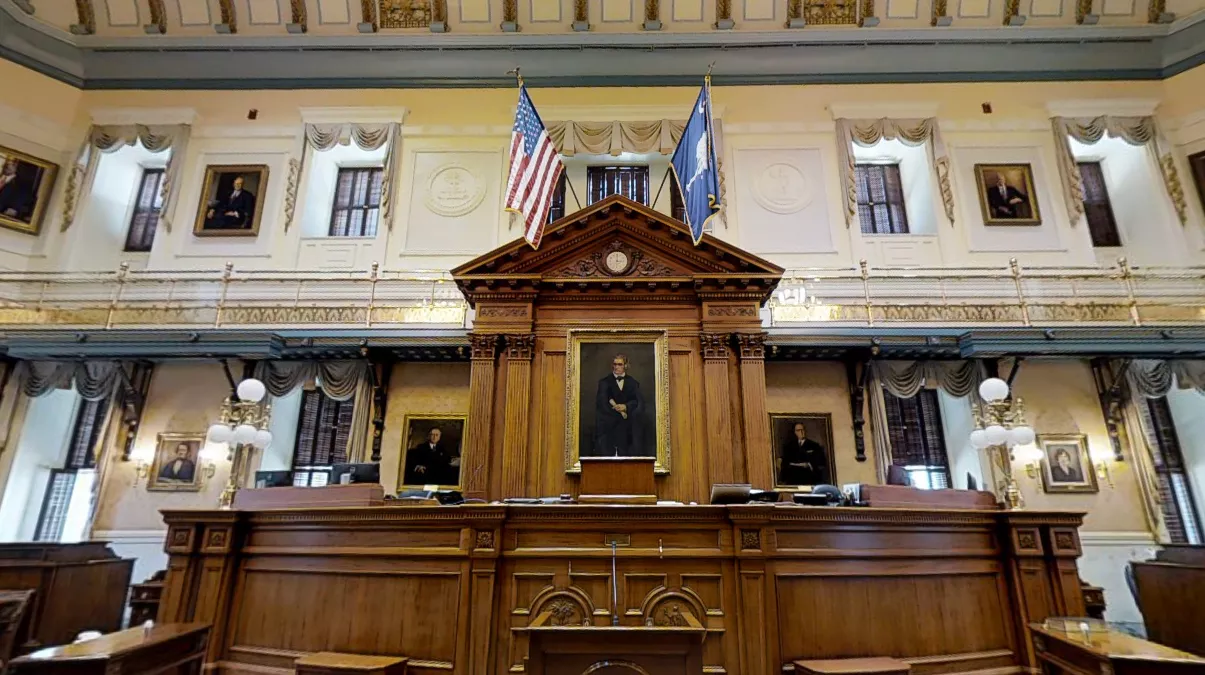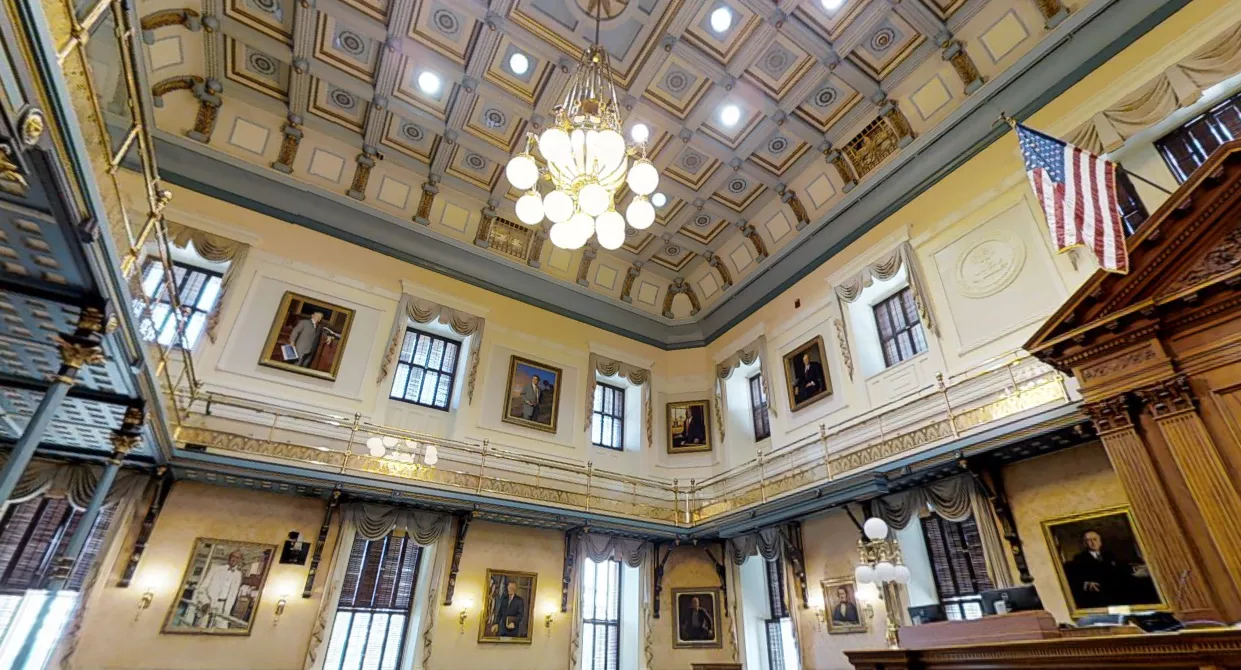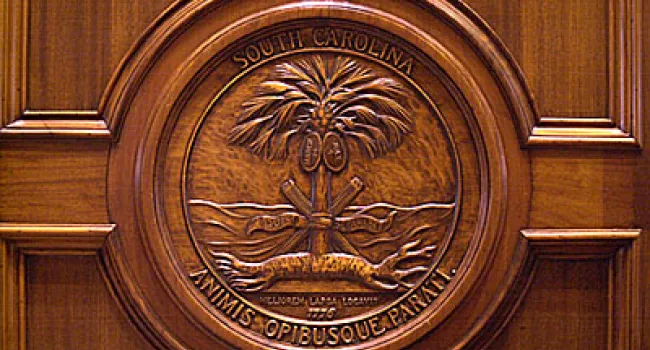The South Carolina Senate is one of the two lawmaking branches of state government that make up the South Carolina General Assembly. The Senate Chamber is located off the main lobby. Every year, the state’s senators convene the second Tuesday of January and the session lasts until the first Thursday of June. Tuesdays, Wednesdays, and Thursdays are legislative days, totaling 100 lawmaking days per year. There are 46 senators, each serving a four-year term of office. When in session, the Senate uses the old English tradition of voice vote. The president of the Senate is the lieutenant governor.
Items of interest in the Senate Chamber include the Senate desk and rostrum, which encloses a Sylvan Brothers clock and holds a portrait of John C. Calhoun; the sword of state; the great seal of South Carolina, which is carved into the Senate desk; and the Senate seal. The chamber also includes portraits of many prominent South Carolinians which can be seen while visiting the South Carolina State House.
Senate Desk: The Senate desk is one of the oldest and most valuable pieces of furniture in the South Carolina State House. The desk and the rostrum are finely crafted of solid British Honduras mahogany. When it was originally hand-carved by the Columbia Lumber Company, the desk and rostrum cost the taxpayers of South Carolina $3000.00. Today it is valued at $500,000.
Rostrum: The rostrum provides a detailed accent to the Senate desk. It also serves as the backdrop for a portrait of South Carolina Statesman John C. Calhoun. A statue of John C. Calhoun is situated in the Main Lobby.
Sylvan Brother clock: This rare Sylvan Brothers clock is inset in the rostrum, surrounded by intricate patterns of hand-carved mahogany.
John C. Calhoun: John C. Calhoun, represented in this portrait, is considered to be one of South Carolina’s greatest statesmen. He served nationally as Secretary of State, Secretary of War, United States Congressman, and United States Senator. He was Vice-President of the United States under presidents John Quincy Adams and Andrew Jackson. It is likely that John C. Calhoun would have been elected President of the United States had he not made many enemies by supporting nullification, the theory that the individual states can override laws passed by the United States government. His theories on nullification led to the state’s rights movement, which eventually led to secession and civil war.
Seal: The seal of the South Carolina Senate is made by combining the sword of state, symbol of the authority of the Senate, and the state seal of South Carolina.
Sword of state: The sword of state is the South Carolina Senate’s symbol of authority. The sword rests in the customary rack on the Senate rostrum in front of the President’s chair during the daily sessions and is carried by the Sergeant-at-Arms on all state occasions. The present Sword of State was presented to the Senate February 20, 1951, as a personal gift to South Carolina by Lord Halifax, former British ambassador to the United States. The sword was fashioned by master craftsmen of the Wilkinson Sword Company of London, England. The sword has a pointed straight blade, the upper portion of which is etched with a design containing the state flower, the yellow jessamine. One side of the design is centered with the state seal. The sword has a golden curved guard and a handle wrapped with gold braid.
The original sword of state is first mentioned in official records on Friday May 5, 1704, when money was allocated by the South Carolina Assembly for its purchase. Evidence indicates that this first sword was made in Charleston, South Carolina. It was stolen from the Senate rostrum in 1941. It was replaced by a cavalry sword on March 5, 1941, as the Senate Journal of that date relates: “Mr. Means, on behalf of the Charleston Museum, which is the oldest like institution in the U.S., presented to the Senate a cavalry sword made in 1800 and used in the War of 1812 and in the War of the Confederacy, to replace the Sword of State recently stolen from the Chamber.” The cavalry sword was returned to the Museum of Charleston after the present sword was presented to the Senate.
